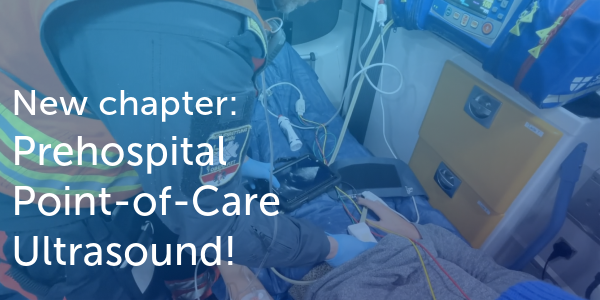1.9 Speckle Tracking / Deformation Imaging - Basics

Speckle tracking is a new technology which provides important additional information related to systolic and diastolic function of the ventricles, It analyses speckle artifacts in the echo image to obtain information of myocardial contractility and also on relaxation. Speckles are small areas of higher echogenicity which are caused by reflections, refraction, and scattering of echo beams. By tracking such speckles in the wall of the left ventricle throughout the cardiac cycle it is possible to obtain information on the direction and velocity of motion. Comparing the motion of individual speckles to each other allows us to analyze the „deformation“ of the myocardium. In other words the magnitude that myocardial „fibers“ expand (diastole) or contract (systole).

The term that is used to describe the degree of deformation is „strain“, while strain rate is the rate of change in strain over time. Negative strain (shortening) means contraction, while positive strain is relaxation (lengthening).
Advantages of Speckle Tracking over Tissue Doppler Angle independant Only reflects active contraction (no tethering effects) More robust Less influenced by frame rate Easy to perform All compontents of deformation can be assessed Strain is the degree of myocardial shortening in percent. Positive strain denotes relaxation and negative strain contraction.We now know that the contractile function of the heart has several components (see section 3.2.3.2.2 Myocardial Mechanics). Speckle tracking is able to analyze each of these components separately. In short axis views you will be able to look at radial and circumferential deformation, while the apical views are used to assess longitudinal function. Subendocardial function is driven mostly by longitudinal contraction, and is often impaired before the circumferential or radial component deteriorates. Thus, longitudinal function serves as an early marker of left ventricular dysfunction. There are numerous disease entities in which strain derived deformation parameters are reduced before the ejection fraction drops. Specific patterns will be discussed in the corresponding chapters.
Longitudinal strain allows detection of subclinical left ventricular dysfunction.Strain can be computed during every point and time of the cardiac cycle. The best parameter for systolic function however is the peak systolic strain. Peak systolic strain is defined as the maximal shortening (at any region of the myocardium) during systole (after the onset of the QRS complex and before aortic valve closure occurs).
It is possible to measure strain in individual segments by averaging all segments of the entire ventricle. This value is called global peak systolic strain (GPSS). Usually this is done for longitudinal strain from all apical views. Therefore it is also called global longitudinal peak systolic strain (GLPSS). There is some heterogeneity for different segments and there is also some degree of variation in absolute strain values between different vendor, especially for radial and circumferential strain. Normal values for strain are depicted the following table.
4 ch view Mean peak systolic longitudunal strain LV segment (2 ch view) Mean peak systolic longitudinal strain LV segment
3ch view Mean peak systolic longitudinal strain Basal septal - 13.7± 4 Basal anterior - 20.1 ± 4 Basal anteroseptal -18.3 ± 3.5 Mid septal -18.7 ± 3 Mid anterior - 18.8 ± 3.4 Mid anteroseptal -19.4 ± 3.2 Apical septal -22.3 ± 4.8 Apical anterior - 19.4 ± 5.4 Apical anteroseptal -18.8 ± 5.9 Apical lateral -19.2 ± 5.4 Apical inferior -22.5 ± 4.5 Apical posterior - 17.7 ± 6 Mid lateral -18.1 ± 3.5 Mid inferior - 20.4 ± 3.5 Mid posterior -16.8 ± 5 Basal lateral -17.8 ± 5 Basal inferior -17.1 ± 3.9 Basal posterior -14.6 ± 7.4 Mean left ventricular longitudinal peak systolic segmental strain valures calculated from 242 healthy subjects by Marwick et al. Scanner: Vivid 7, GE Medical Systems, Horton, Norway. Sofware: EchoPAC PC, version 6.0, GE Healthcare, Chalfont St. Giles, UK LV segment Mean peak systolic cicrumferential strain Mean peak systolic radial strain Anterior -24 ± 6 39 ± 16 Lateral -22 ± 7 37 ± 18 Posterior -21 ± 7 37 ± 17 Inferior -22 ± 6 37 ± 17 Septal -24 ± 6 37 ± 19 Anteroseptal -26 ± 11 39 ± 15 Mean left ventricular circumferential and radial peak systolic strain values calculated from 60 healthy subjects aged 39 ±15 by Hurlburt et al. Scanner: Vivid 7, GE Medical Systems, Milwaukee, WI, USA. Sofware: EchoPAC, GE Medical Systems, Milwaukee, WI, USA.
Analogy: deformation
There are also systems which are able to compute 3D strain. At this time it is not clear wether 3D strain calculations are superior to conventional 2D strain but it is certainly a promising approach since it would allow measurements of so called out of plane motion.
The major limitation of 3D strain is the poor frame rateRotation, Twist and Torsion
With the help of speckle tracking it is also possible to look at the rotation of the heart. In healthy subjects, the left ventricle undergoes a twisting motion which leads to a decrease in the radial and longitudinal length of the left ventricular cavity. During isovolumetric contraction the apex initially performs a clockwise rotation. During the ejection phase the apex then rotates counterclockwise while the base rotates clockwise when viewed from the apex. In diastole relaxation of myocardial fibers and subsequent recoiling (clockwise apical rotation) contributes to active suction. Thus, the contraction of the heart is similar to the winding (and unwinding) of a towel. From a mathematical point of view several parameters of myocardial mechanics can be described:
- Rotation (degrees) = angular displacement of a myocardial segment in short axis view around the LV longitudinal axis measured in a single plane
- Twist or Torsion (degrees) which is the net-difference between apical and basal rotation (calculated from two short axis cross-sectional planes of the LV)
- Torsional gradient (degrees/cm) which is defined as twist/torsion normalized to ventricular length from base to apex and accounts for the fact that a longer ventricle has a larger twist angle


